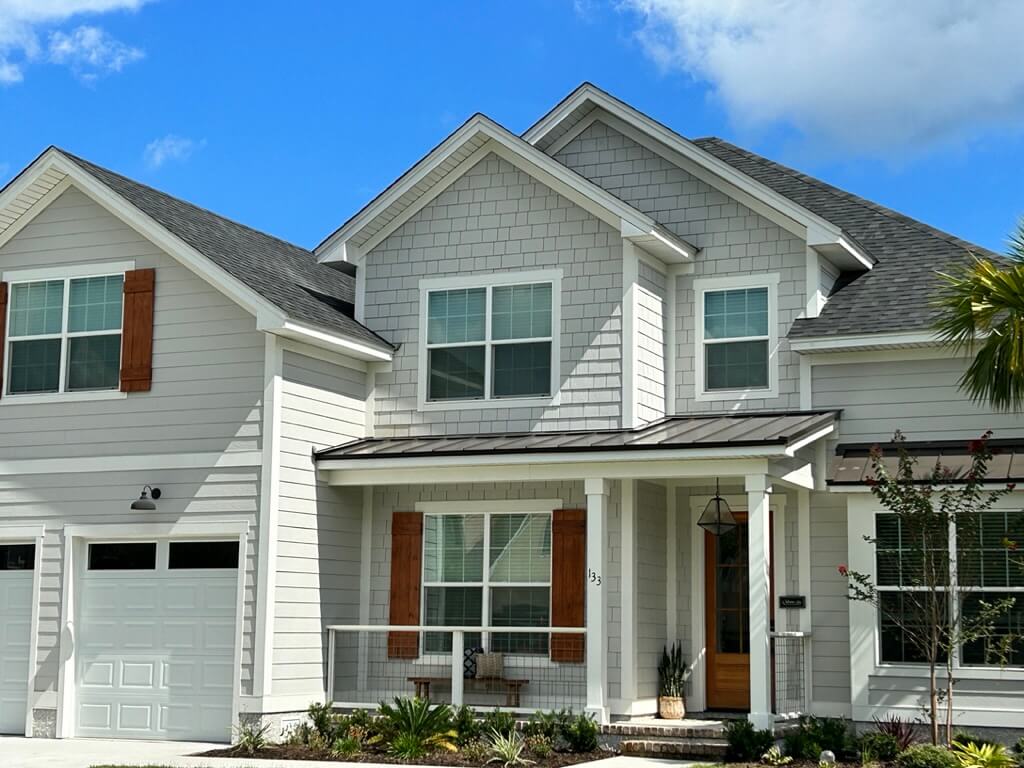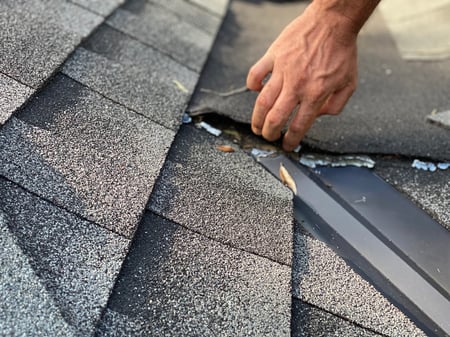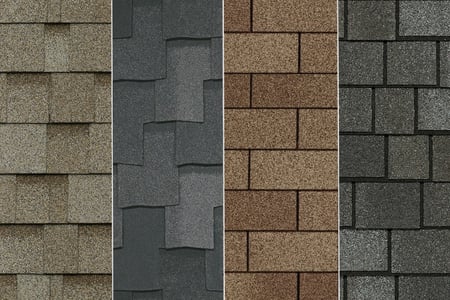
Maintaining the integrity of your shingle roof is crucial for the longevity and safety of your home. A well-maintained roof not only enhances curb appeal but also protects your home from the elements. But, where do I start when it comes to the repair process?
Well, dear reader, I’m glad you asked! At RoofCrafters, we know that a shingle roof replacement is no easy feat, which is why we’re coming to you with some tips, tricks, and everything in between.
If you’re a new homeowner and are not sure where to start, or simply just looking to learn more about shingle roof replacements, we’ve got you covered. In this article, we'll delve into everything you need to know about shingle roof repairs, from identifying common issues to executing DIY fixes and knowing when to call a professional. Let’s get started!
Understanding Shingle Roof Problems

Before diving into repairs, it's essential to understand the common issues that can affect shingle roofs. Awareness of these problems will help you identify them early and take appropriate action.
Common Shingle Roof Issues
- Missing or broken shingles: High winds, heavy rains, and physical damage can cause shingles to break or go missing. This exposes the underlying layers to the elements, leading to potential leaks and further damage.
- Granule loss: Over time, shingles lose their granules, which protect them from the sun’s UV rays. Granule loss can accelerate the aging process of shingles and reduce their effectiveness.
- Curling or buckling: Poor ventilation, improper installation, or old age can cause shingles to curl or buckle. This can compromise the roof’s ability to shed water and may lead to leaks.
- Roof leaks: Leaks can stem from various issues such as damaged flashing, cracked shingles, or poor installation. Identifying the source of a leak is crucial for effective repair.
- Moss and algae growth: In humid climates, moss and algae can grow on shingles, retaining moisture and potentially causing rot and damage over time.
DIY Shingle Roof Repairs
While some roof repairs require professional intervention, many common shingle issues can be addressed with DIY fixes. Of course, RoofCrafters always advocates for professional help, but for your handymen out there, here are some steps you can follow for basic repairs:
Tools and Materials Needed
- Replacement shingles
- Roofing nails
- Hammer
- Pry bar
- Utility knife
- Roofing adhesive
- Ladder
- Safety harness
Step-by-Step Repair Guide

Before climbing onto your roof, ensure you have a sturdy ladder and a safety harness. Always, always prioritize your safety! Then, use a pry bar to lift the damaged shingle and remove the nails holding it in place. Make sure to be gentle to avoid damaging adjacent shingles.
Now, it’s time to slide the new shingle into place and secure it with roofing nails. Make sure to align it properly with the surrounding shingles, unless a jagged look is what you’re going for (kidding). Then, apply roofing adhesive to the underside of the shingle to secure it further and prevent wind uplift.
After completing the repair, give yourself a pat on the back, and check for any signs of leaks. If you notice any, it might indicate a deeper issue that requires professional attention. Now, doesn’t that all sound a little too tedious? I agree! So, let’s call the professionals, shall we?
When to Call a Professional
While DIY repairs are cost-effective, certain situations necessitate professional intervention (like this one, as we now know). Here’s when you should really consider calling a roofing expert:
Extensive Damage
If your roof has extensive damage, such as widespread granule loss, multiple leaks, or significant shingle deterioration, it’s best to consult a professional. They can assess the damage comprehensively and recommend the best course of action.
Structural Issues
If you suspect structural issues, such as sagging rooflines or damage to the roof deck, a professional assessment is crucial. Structural problems can compromise the safety of your home and require expert repairs.
Warranty Concerns
If your roof is still under warranty, attempting DIY repairs might void the warranty. Always check the warranty terms and consult the manufacturer or a professional to ensure compliance.
Lack of Experience
If you’re not confident in your ability to perform the repairs safely and effectively (like most of us), it’s wise to hire a professional. Roofing work can be dangerous, and improper repairs can lead to more significant problems down the line.
Preventative Maintenance for Shingle Roofs

Regular maintenance can extend the life of your shingle roof and prevent costly repairs. It’s a win-win! Here are some preventative measures you can take:
Regular Inspections
Conduct regular roof inspections, especially after severe weather events. Look for signs of damage such as missing shingles, granule loss, or moss growth. Early detection of issues allows for timely repairs.
Clean Your Gutters
Clogged gutters can cause water to back up and seep under the shingles, leading to leaks and water damage. Clean your gutters regularly to ensure proper drainage.
Trim Overhanging Branches
Trees with overhanging branches can damage your shingles during storms and contribute to moss and algae growth. Trim branches away from your roof to reduce these risks.
Ensure Proper Ventilation
Proper attic ventilation is essential to prevent heat and moisture buildup, which can damage shingles. Ensure your attic is well-ventilated to prolong the life of your roof.
Remove Moss and Algae
If you notice moss or algae growth, remove it promptly. Use a mixture of water and bleach to kill the growth, and consider installing zinc or copper strips to prevent future occurrences.
Choosing the Right Shingles for Replacement

When it comes to replacing shingles, choosing the right type is crucial for both performance and aesthetics. After all, no two shingles are made the same! Here are your options:
Asphalt shingles: Asphalt shingles are the most common type, known for their affordability and ease of installation. They come in a variety of colors and styles to suit different architectural designs.
Architectural shingles: Also known as dimensional shingles, architectural shingles are thicker and more durable than standard asphalt shingles. They provide a layered, three-dimensional look and can enhance your home’s curb appeal.
Wood shingles: Wood shingles offer a natural and rustic appearance. They are typically made from cedar or redwood and can last longer than asphalt shingles with proper maintenance. However, they are more expensive and require more upkeep.
Slate shingles: Slate shingles are known for their durability and longevity, often lasting over a century. They offer a distinctive and elegant appearance but come with a higher price tag and require professional installation.
Metal shingles: Metal shingles are durable, lightweight, and energy-efficient. They can mimic the look of other materials like wood or slate and are resistant to extreme weather conditions.
Final Thoughts on Shingle Roof Repairs
As you now know, shingle roof repairs are an essential part of home maintenance, ensuring your roof remains in top condition and continues to protect your home effectively. By understanding common shingle issues, knowing how to perform basic repairs, and recognizing when to call a professional, you can maintain your roof’s integrity and extend its lifespan.
Regular inspections and preventative maintenance are key to avoiding costly repairs and ensuring your roof remains a reliable shield against the elements. Whether you’re tackling a DIY repair or seeking professional help, keeping your shingle roof in good shape is a smart investment in the longevity and safety of your home.
If you’re ready to take the next step and get that repair you’ve been putting off, be sure to hit that “Schedule an Inspection” button down below, and one of our experts will walk you through the process!
At RoofCrafters, our mission is to provide job opportunities for others to thrive and grow while making a meaningful impact within our communities.



